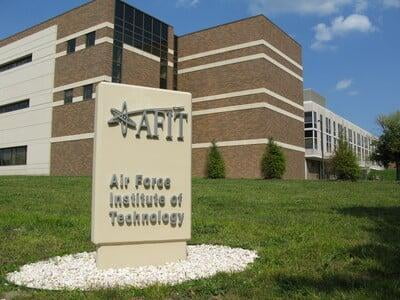WBI Educates AF Acquisition Workforce on Tech Transition During AFIT Lecture
02.04.20 07:23 PM By Jennie Hempstead

By Laura Dempsey
When the Director of Small Business for the Air Force Research Laboratory (AFRL/SB) examined the gap between AFRL inventions and the number of transition-ready Air Force technologies, he turned to the Commercialization Services Team at Wright Brothers Institute (WBI) for help.
The Air Force is in the business of protecting the country and understands the critical role manufacturing plays to keep Airmen supplied with the latest and greatest equipment and technology. In part, the Air Force must depend on a system of technology transfer and transition to make new ideas a reality. This process involves getting technologies out to industry for development and manufacturing, then back to the Air Force for transition to the warfighter. It’s complex, time-consuming and can take months or years to yield tangible results. The technical workforce needs help translating those game-changing technologies into manufacturable products that the Air Force community acquisition can buy.
And that is WBI’s Commercialization Services Team’s specialty.
Meghan Sheehan, Commercialization Services Team Lead, was tasked with educating the AFRL workforce in tech transfer. “It comes down to this: there are really clever people (at AFRL), but they don’t specialize in tech transfer and transition. I know a lot about that, so we decided to see if we couldn’t share some knowledge.”
In addition, Sheehan pointed out the Entrepreneurial Opportunity Program, an AFRL effort that essentially supports researchers while they take their invention and turn it into a business.
“That program could flourish,” Sheehan said, “if participants get good training in the beginning. We needed a training program, so we developed one.”
It’s called the Activation Series, a three-step program to help people understand the importance of their tech transfer activities for commercial generation of a product. The training series, developed in partnership with I-Corps@Ohio, caters to scientists and engineers at their interest level of technology transfer. Whether they are happy in the lab, eager to start their own company or managing programs of record, a commercialization foundation is critical to transition of ideas into products.
“It’s that commercial product that gets transitioned back to the warfighter,” Sheehan said. “Unless [a technology or invention] gets out, it can’t get back in.”
George Bailey, Course Director at the School of Systems & Logistics at the Air Force Institute of Technology (AFIT), holds a “Current Topics in Acquisition and Support” class every year for experienced acquisition and support professionals, bringing current issues to their attention and helping them become better at their job.
“He thinks it’s important to have some degree of understanding of the importance of tech transfer and commercial development of Air Force inventions, so that acquisition and support personnel can recognize opportunities to support the process,” Sheehan said.
Using the Activation Series as a template, Sheehan developed a lecture for Bailey’s class. On Feb. 4, 2020, she took the course to the approximately 40 students in the AFIT classroom. In addition to AFRL personnel, students came from the Air Force Materiel Command, Air Force Life Cycle Management Center, the Air Force Installation Contracting Agency, and the Air Force Cost Analysis Agency.
The response was positive, according to Mr. Bailey, who told Sheehan: “The students seemed engaged and any time they are asking questions, I know you’ve got them thinking.” Mr. Bailey plans to continue hosting the lecture in future offerings of the course.
